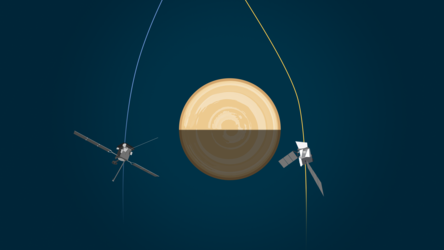

Science & Exploration
Venus flyby science operations
BepiColombo will take seven years to get to planet Mercury, with a total of nine gravity assist flybys at Earth, Venus and Mercury before entering orbit. But the orbiters will be able to operate or partially operate some of their instruments during the cruise phase, affording unique opportunities to collect scientifically valuable data at Venus. Moreover, some of the instruments designed to study Mercury in a particular way, can be used in a completely different way at Venus – the main difference being that Venus has a thick atmosphere while Mercury does not. This graphic highlights some of the science themes that may be possible to study during the two flybys of Venus.
BepiColombo is a joint ESA-JAXA mission.





